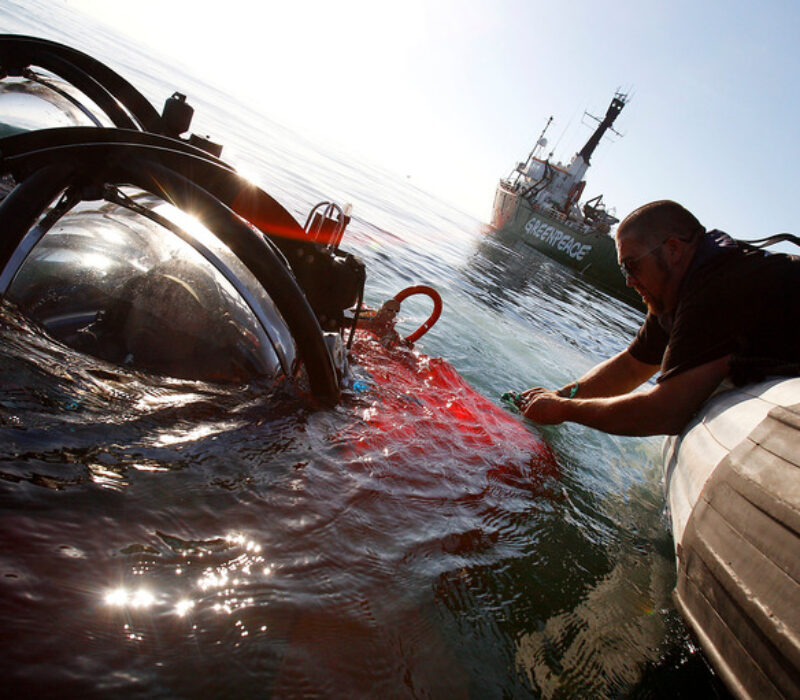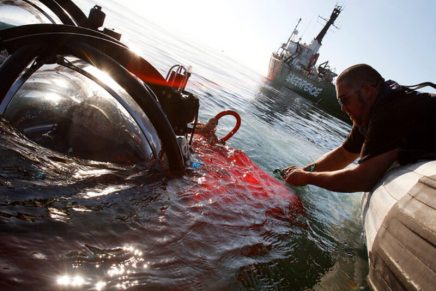The past few years have seen a general uptick in philanthropic giving, particularly from UHNW individuals. Study.

Through its Perpetual Planet Initiative, Rolex supports One Ocean Foundation which surveys whales and other animals that thrive in the waters of the Mediterranean’s Caprera Canyon in order to better protect them. @Rolex x @One Ocean Foundation
Wealth-X, an Altrata company, recently analyzed the giving habits of ultra high net worth (UHNW) individuals around the world to gain a better understanding of how philanthropy has evolved in recent years. In this context, UHNW individuals are people with a total net worth of at least $30 million. The results of the analysis indicate that global philanthropic activity has steadily increased, especially in light of events like the COVID-19 pandemic.
There are also some key differences between giving patterns between regions and among different tiers of wealth. Some regions, such as Asia, are beginning to formalize much of their philanthropic efforts through the consolidation of new organizations.
UHNW individuals in some regions also prefer different causes than those in others. For example, healthcare ranks in the top six industries of UHNW donors in North America and Asia, but not in Europe, where the public sector plays a more prominent role in the provision of healthcare services. Philanthropy aimed at improving education is also more popular in Asia than it is in other regions.

DOER supervisor Rudy Schlepp attaches a buoy to the the Dual Deep Worker submarine before descending into the the Gulf of Mexico. A team of independent scientists joined the crew of the Arctic Sunrise to conduct a series of scientific research programs that will further the understanding of the impacts of both oil and chemical dispersants on the Gulf ecosystem in the aftermath of the British Petroleum oil spill. @Greenpeace Fund / @greenpeacefund.org
How the Scale of Philanthropic Giving Has Changed
According to Wealth-X’s report, Ultra High Net Worth Philanthropy 2022, total giving by the ultra wealthy rose by 4.1% in 2020, outpacing the growth in giving from non-UHNW, which rose by only 2.9%.
These increases in giving were characterized by collaborations between grant-makers and donors. They may also be the result of an increase in the amount of wealth accumulated by UHNW philanthropists. According to the report, the global UHNW population grew 1.7% in 2020 to 295,450 individuals.
The combined net worth of this population increased by 2% to $35.5 trillion.
Popular Causes for Donors
Many of the most popular causes for donors relate to recent events. However, some regional giving trends suggest long-standing causes, such as education, are still among donors’ top priorities.
- Pandemic Relief
Not surprisingly, many donors were focused on pandemic relief efforts in 2020 and 2021, especially in regions where governments struggled to keep pace with the needs of their populations. For example, the Wealth-X report found that healthcare and social services were among the seven most prevalent philanthropic causes among UHNW donors in North America, Europe, and Asia.
- Education
However, Education continues to remain one of the top philanthropic causes among these donors. Education was a selected cause for 55.8% of North American respondents, 47.3% of European respondents, and 62.0% of Asian respondents.
- Ukraine
The war in Ukraine is likely to be a dominant cause for philanthropic giving in the coming months and years. As this is a new crisis, data on UHNW individuals’ philanthropic efforts are still forthcoming. However, several wealthy individuals have already made significant humanitarian donations to help Ukrainian refugees and people still struggling within the country.
- UN Sustainable Development Goals
Finally, the United Nations’ Sustainable Development Goals have been an important cause for donors in recent years. However, there is concern that the scale of the world’s sustainability needs is too large for philanthropists to handle alone. There needs to be better coordination and understanding between states and individuals, as this would allow gifting to be simpler and work more effectively on a global scale. As Pam Davis puts it, “sustainability has to be more than a tick box.”
Regional Giving Trends
There is plenty of overlap between the philanthropic interests of the wealthy in different regions. However, there are some differences between giving in North America, Europe, Asia, and what Global Philanthropic refers to as “The Global South” as well.
- Giving Trends in North America
North America has long led the world through its philanthropic initiatives. According to Ben Morton Wright, the “gold standard of giving in the world is the US. Many successful Americans are focused on giving away their wealth during their lifetimes.”
More than $175 billion was given to philanthropic causes in 2020 and Northern America accounted for more than half of that, giving $85 billion in total. This includes $90.5 billion among North America’s 139,400 UHNW individuals, according to the Ultra High Net Worth Philanthropy 2022 report by Wealth-X.
Evidence from the Wealth-X report and responses from the experts from Global Philanthropic suggest that there is an emergence of heightened philanthropic activity in other regions, most notably Asia.
- Giving Trends in Asia
According to the Wealth-X report, Asia is the world’s second-largest ultra wealth region, with a UHNW population and total net worth approximately 15% larger than that of Europe.
The most popular philanthropic cause in Asia is education. Education accounted for more than half of donations (62%) in 2020. However, the pandemic has accelerated giving toward healthcare.
UHNW giving Asia only accounted for 12% of the global share in 2020. However, there is evidence that Asia is emerging as a center for increasing philanthropy. This may be due, in part, to the rise of new philanthropic and non-profit organizations.
- Giving Trends in Europe
According to the Wealth-X report, Europe’s ultra-wealthy accounted for 30% of total UHNW giving, at $52 billion.
Like North America, Europe has a long tradition of unrestricted giving. It also has established philanthropic and nonprofit organizations that make an impact globally. The biggest trend in this region is that philanthropists and philanthropic organizations are beginning to coordinate more effectively to tackle global problems.
According to Pam Davis, “In Europe, we’ve seen unrestricted giving coming to the top. Many of the big philanthropists, trusts, and foundations have come to understand how important funding is for the lifeblood of the organization, so we are seeing more of them work together to solve some of the biggest problems. The cloak of invisibility around these donors is starting to fade away.”
European philanthropy is noteworthy due to its transparency. There is much more collaboration between UHNW individuals, governments, and nonprofits than in some other regions, and individuals tend to be much more transparent about where and how much they are giving.
- Giving Trends in the Global South
Significant increases in philanthropic giving in places like Europe and North America are encouraging. However, these regions have long dominated the world of philanthropy. The rise in philanthropy within regions that have been sidelined historically could have an even greater impact on communities.
For example, countries located in the southern hemisphere, including many developing economies, have not always been recognized for their philanthropic giving. Pam Davis and Ben Morton Wright, among others, generally refer to these regions and the countries within them as “the Global South.” According to the London School of Economics, this term “has been a general rubric for decolonized nations roughly south of the old colonial centers of power.”
Global Philanthropic notes that there is a “historically unequal power dynamic that exists between philanthropic organizations in the Global South (including NGOs and social enterprises, grantmakers and grant recipients) and resource-rich foundations of the Global North.” This power dynamic is underlined by the control foundations in the Global North have over funding allocation as well as difficulties organizations in the Global South encounter during grantmaking processes.
There is an abundance of wealth in many areas of the Global South, as well as wealthy individuals who wish to donate to philanthropic causes. As such, this power dynamic may be hindering the Global South’s ability to contribute and limiting global philanthropic impact overall.

@PETA UK -People for the Ethical Treatment of Animals / @peta.org.uk/








